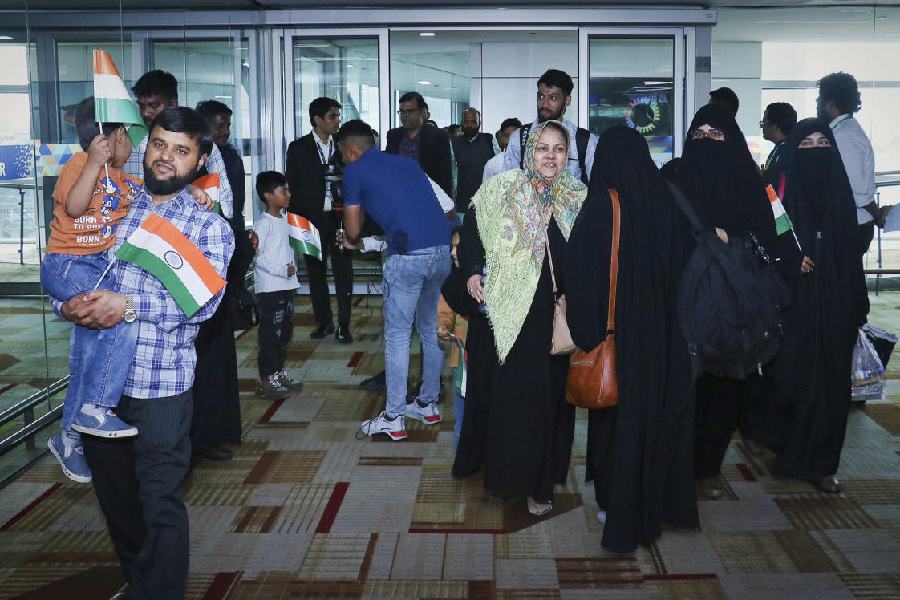It's Navami. You need something special for these two remaining days to ride the crest of euphoria. And, of course, food is the keyword here. We have a surprise for you and have brought you some of the best recipes from across the sub-continent.
Much is made of the Bengali’s love affair with maachh bhaat. So, in celebration we’ve got fish recipes from the kitchens of Pakistan, Sri Lanka, Bhutan, Bangladesh, Nepal and close to home, the Konkan region. Happy cooking!
PAKISTAN
Pakistan, like India, has no unified Pakistani cuisine, but a combination of many regional cuisines. Fish is very popular in the Sindh region, where the Indus or the Sindhu River is home to the celebrated palla fish (a variant of the hilsa).
But this is not to say that the other regional cuisines do not pay due respect to the piscine cult. From the Lahori fish masala to the very Sindhi fish pulao, fish is much appreciated throughout Pakistan.
Pakistani regional fare is not terribly spicy. Spices are used to enhance flavours and a lot of yoghurt is used to temper things down. When it comes to palla fish, the trick is to use very little oil since the fish is very oily. The recipe that Chef Munir of Sheraton Karachi Hotel offers us uses no oil.He char-grills the fish. It is a classic Sindhi twist to flavour the dish with tamarind.
Grilled Palla (Serves two)
 |
Ingredients 300gm-350gm whole palla fish (or hilsa) 10gm garlic paste 50gm tamarind 1tsp red chilli powder ½tsp turmeric powder 2tsp lime juice Salt to taste
Method Soak the tamarind in about 1½ cups of water for two hours. Clean and gut the fish. Put the fish in a pan and smear with the garlic paste. Add red chilli powder, turmeric powder and salt. Add the pre-soaked tamarind and leave to marinate for two hours. Prepare charcoal over a pit, stick the marinated palla on a sturdy skewer and char-grill. When cooked, take off the skewers, drizzle with lemon juice and serve hot with naans and salad.
NEPAL
Nepalese cuisine varies from place to place according to the customs and habits of the people from different ethnic groups. Dal-bhaat-tarkari or lentil-rice-seasonal vegetable curries form the staple diet throughout the country with meat and fish eaten as side dishes. Nyha, or fish, is considered to be auspicious amongst the Nepalese people who offer small dry fried fish with boiled fried egg to various deities as a symbol of good luck. Prawns, pomfret and garoupa fish are hot favourites, so are dishes like tareko matza (spicy, deep-fried eels) as well as sanya khuna, a kind of spicy jelly made from fish soup.
Pramod Aryal, a kitchen executive in Radisson Hotel Kathmandu, shares a mouthwatering barbecued pomfret recipe with us.
Pomfret Maccha Poleko (Serves one)
 |
Ingredients 1 fresh pomfret 30ml Szechuan chilli sauce 30gm ginger 20gm garlic A few green chillies 40ml tomato ketchup 5gm garam masala 2 lemons 10gm saffron 15gm Szechuan pepper powder Salt to taste 20ml mustard oil 1 cucumber 1 carrot 2 onions A few heads of lettuce 2 bell peppers Half a fresh pineapple 2 tomatoes
Method Clean the pomfret. Make a marinade of mustard oil, ketchup, lime juice, salt, Szechuan pepper powder, green chilli paste, ginger garlic paste, saffron, garam masala and salt. Marinate the fish in this for an hour. Dice the bell pepper, pineapple, onion and tomato. Keep aside. Grill the fish in a Salamander Griller or in a tandoor. When the fish is almost done, grill the diced vegetables and pineapple along with it. Wash and peel cucumber, carrot and onion into roundels and arrange on top of some lettuce in a serving dish. Add Szechuan sauce as accompaniment in a bowl. When the fish is cooked, serve on the dish and garnish with lemon.
BHUTAN
Bhutan is one of the best-kept secrets in the fly-fishing world. While much is said about the dried fish available in the local markets, it’s not known very widely that Bhutan has a wealth of cold water fish like mahseer and brown trout in its many rivers and streams. It is said that one of the members of the Bhutanese royal family, a fishing enthusiast, brought in trout from Kashmir in the late 1960s and introduced the species to Bhutan. Fish had not been a big part of the Bhutanese diet before, but given the higher nutritional value of cold-water fish and the culinary influence of Nepalese and Indian settlers and travellers to this Himalayan kingdom, it made its way into Bhutanese cuisine. Here’s a typical fish tsoem (tomato-based curry) that the Bhutanese serve.
Chef Balaji Srinivas of Taj Tashi, Thimphu suggests you use bekti, since trout is not available, to make this delectable dish at home.
 |
Bekti Tsoem (Serves two)
INGREDIENTS 300gm diced bekti 50gm sliced onions 50gm sliced tomatoes 50gm chilli powder 30gm chopped spring onions 40gm butter Salt to taste
Method Melt the butter slowly in a pan. Add onions, tomatoes and chilli powder. Cook till soft, but do not allow it to change colour. Add five cups of water. Bring to a boil and add the fish and salt. Simmer for eight minutes. Add the chopped spring onions. Serve hot with red rice.
BANGLADESH
Bangladeshi cuisine is marked by stronger flavours, unlike West Bengal where subtle tempering of food with spices is more the norm. Fish and rice, of course, is the mainstay. But ilish or hilsa wins hands down as the best fish to come from Bangladesh. And all Bengalis know that this is one fish you can cook any way and win — jhaal, jhol, bhaja, bhape, as ilish pulao or even as tok (chutney). The bones and head go in to make a killer knata chochchori, and let’s not say anything about ilish machher dim bhaja (fried roe). But somehow the Bangladeshi favourite remains the shorshe ilish. Remember, though, that it’s sacrilegious to add even one grain of sugar or to leave out mustard oil if you want to get the authentic flavours.
Chef Shaker Ull Alam of Radisson Water Garden Hotel, Dhaka gives you this classic recipe.
 |
Shorshe Ilish (Serves four)
Ingredients 1kg hilsa 500gm onion paste 50gm mustard paste 50gm green chilli, whole 10gm turmeric powder 5gm red chilli powder 2.5gm cumin powder 20gm ginger paste 1tsp lemon juice 200ml cooking oil 100ml mustard oil Salt to taste 500ml water
Method Clean the fish thoroughly, cut it into pieces and keep aside. Mix mustard paste, turmeric powder, chilli powder, cumin powder, ginger paste and salt together. Add a cup water to this to make a masala paste and keep aside. Coat each piece of the fish with a tablespoon of the masala paste. Heat cooking oil in a frying pan and fry the fish pieces on medium heat. Set aside. Add the rest of the cooking oil and mustard oil in a clean kadhai, heat the oil and add the onion paste. Cook for five minutes and add the rest of the masala paste. Stir for two minutes on medium heat. Add green chilli and lemon juice, stir for a minute more. Add water, cover and boil for two minutes. Add the fried hilsa, cover and cook on low heat for five minutes. Serve hot with steamed rice and green chillies.
SRI LANKA
Our neighbour down south has a cuisine remarkably similar to ours, though it’s pretty spicy. Rice is the main component of a meal accompanied by a spicy fish or meat curry along with pickles, chutneys or the very hot coconut sambol (made of ground coconut mixed with chillies, dried Maldive fish and lime juice). Sri Lanka’s 1,340km long coastline assures the steady supply of a fantastic variety of fish with giant crabs being a great favourite. Spicy crab curries hold a place of honour in fine-dining restaurants as well as Sunday lunches at home, especially when people can spend a good few hours buried in crab shells and conversation.
Rohan Fernandopulle, the executive chef at the Hilton Colombo and the only Sri Lankan member of the prestigious Club des Chefs des Chefs, shares a recipe of the Sri Lankan Chilli Crab Curry with us.
 |
Chilli Crab (Serves six)
Ingredients 2kg crab Salt to taste 2tsp pepper 2tsp chilli powder ½tsp turmeric powder 5tbs lime juice For the chilli sauce: 6tsp chopped onion 4tsp chopped garlic 4tsp chopped ginger 2tsp dry chillies 2tsp crushed pepper 2tbs curry leaves 5cm lemon grass, sliced 2tsp sliced green chillies 150ml tomato sauce 50ml vegetable oil 200ml crab stock 25gm drumstick leaves, fried A couple of lemon wedges for garnish
Method Clean the crabs and cut them in half. Season with all ingredients and deep fry till it’s just done. Do not overcook. To prepare the sauce, heat the oil and sauté onion, garlic, ginger and curry leaves. Add cut chillies, dry chillies and crushed pepper and sauté. Mix in the tomato sauce and crab stock. Reduce to half. Add the fried crabs and mix. Check the seasoning. Add the drumstick leaves. Garnish with fried drumstick leaves and lemon wedges and serve hot.
INDIA
When it comes to food, the cuisine varies drastically from one region of India to the other. Touting one to be better than the other would be nothing less than endangering one’s life and limb. However, it’s a matter of unanimous agreement that Konkani cuisine is one of the most scrumptious varieties. Being so near the coast, fish obviously rules Konkani fare. From a fiery fish curry laced with coconut to spicy fish fries rolled in sooji to steamed fish flavoured with herbs — the offerings are mind-boggling. Anand Solomon, executive chef at Vivanta by Taj-President, Mumbai, has a traditional Konkani pomfret recipe up his sleeve.
 |
Haldi Panathla Chi Paplet (Serves two)
Ingredients 2 pomfrets, deboned For the marinade: A pinch of turmeric powder Salt to taste Juice of two medium-sized limes For the green paste: 100gm coriander 3 green chillies 4 pods of garlic 1tsp tamarind pulp 1tsp turmeric powder Salt to taste 2 onions, chopped 3 tomatoes, chopped For the gravy: 4 red chillies 1tsp coriander seeds 2tsp roasted coconut 1tsp whole jeera ½tsp whole peppercorn ½tsp khus khus ½tsp mustard seeds 2 sprigs of curry leaves 2tbs tamarind pulp 6 sprigs of mint leaves, chopped
Method Wash the fish, marinate and keep aside. For the green paste: Grind the ingredients to a fine paste. Heat some oil and add onions and tomatoes. Sauté for a while and add the paste. Cook well. Cool to room temperature, apply over the marinated fish. Wrap the fish with a washed turmeric leaf and keep aside for some time. Then cook the fish, wrapped in the turmeric leaf, in a steamer. For the gravy: Fry the ingredients and grind to a fine paste. Heat oil and add mustard seeds, curry leaves, mint leaves. Add the ground masala and sauté well. Add tamarind pulp and remove from flame. Arrange the steamed fish on a platter and pour the gravy on top. Garnish with lemon wedges.
Compiled by Anindita Mitra, Suktara Ghosh and Tania Bhattacharya










